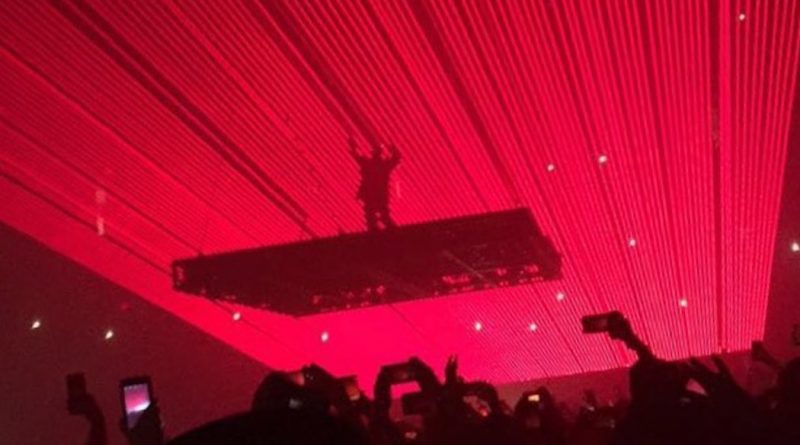Kanye West’s Struggle With Inconvenient Art
 Kaitlin Gawkins
Kaitlin Gawkins
Assistant Online Editor
In a recent question and answer session with the School of the Arts Institute of Chicago (SAIC), Kanye West was asked whether he felt pressure to “dumb himself down” in the music industry in order to make himself palatable for certain audiences. His answer, though rather disjointed, in the normal Kanye fashion, gave insight into the battle between artistic vision and entertainment value that is present in the music industry.
Kanye opens his answer to the question by explaining how he has been facing this issue since he made his debut as a public artist. When his popular song “Gold Digger” featuring Jamie Foxx was released, one DJ refused to play it on his station because of the line about a white woman dating a black man. The broadcaster explained that this was for personal reasons because he himself was involved in an interracial relationship. West was outraged— he couldn’t understand how someone could shut out a piece of art for such a personal reason. The DJ played sexually explicit songs and had no qualms about cursing or violence in music, yet when Kanye made a comment on a very real human experience, it was shut out.
This situation marked West’s realization that the balance between full disclosure/ honesty and listener approval would be a reoccurring wall he would repeatedly have to break down throughout his entire career, especially as an artist in the often negatively stereotyped world of hip hop. Every time he would try to bring something controversial to the attention of the public through his art, he would be shut down by media or brand managers saying that his full disclosure of real life situations was bad for business and advertising, or, probably, makes people think too much about what’s going on around them.
Kanye relates this situation to people taking drugs. He explains that there are drugs that make you feel high or low, make you tell the truth, help you to escape your problems, etc. Music acts in a similar way to this— different genres and styles elicit different human emotional responses. As he puts it, “the interesting balance of making enjoyable music that also has truthful information in it, [is] always a very, very fine line. A fine line when to break the high, in a way.” For example, in dance music the goal is strictly to create a smooth high and keep it going throughout the song, so that people feel happy and content in the moment. This is not necessarily bad, however, it is not what West ultimately aims to create with his music; he is more interested in capturing the full human experience, good and bad.
Ultimately, Kanye explains that art must to be diluted a little bit, to make it accessible: “It’s the ability to step back from that immediate battle to win an overall war, and to understand how long the war really is, and understanding exactly how much to push on your concept, and how much information to put in there, how much to concede, win the fight.” If you release too much at once, it will turn people off to your art altogether, ultimately not reaching as many people as it should. Thus, he is not necessarily compromising his vision, rather, he is releasing it slowly. He understands that he has to create a balance between meeting people where they are, while still sharing his full vision piece by piece.
This is not to say you shouldn’t take risks however. If there’s anything we know about Kanye West, it’s that he knows how to make a wave: “And I think that that’s also the responsibility of artists—to try to get away with whatever you can… Because everyone’s compromising… They’re losing their art, they’re losing their passion, they’re losing their purpose.”
Kanye ends by qualifying the importance of knowing yourself and being confident in what you can and can’t do, with the acknowledgement that every person’s gifts are important. He knows that his skill set is having an eye for art that will be highly accessible to the public; he can bring abstract and difficult concepts to the public eye for all to experience. This is one of the qualities that makes him special as an artist—- he has a unique perception of the world, a solid vision, and he knows exactly how to communicate his ideas to a wide, diverse audience. As he sees it, “Everything is art… We are all part of one giant movie… one giant painting.”

